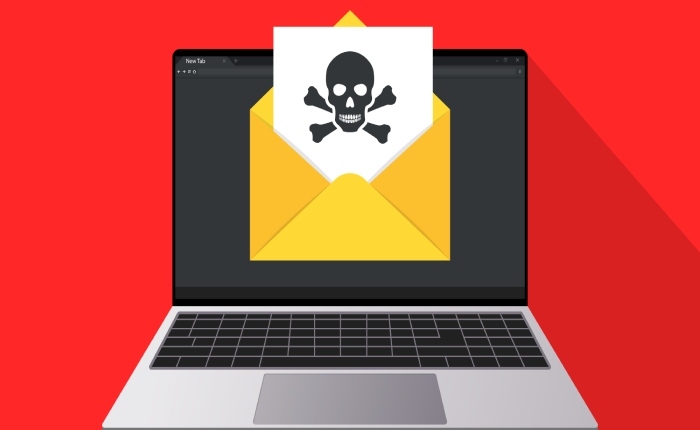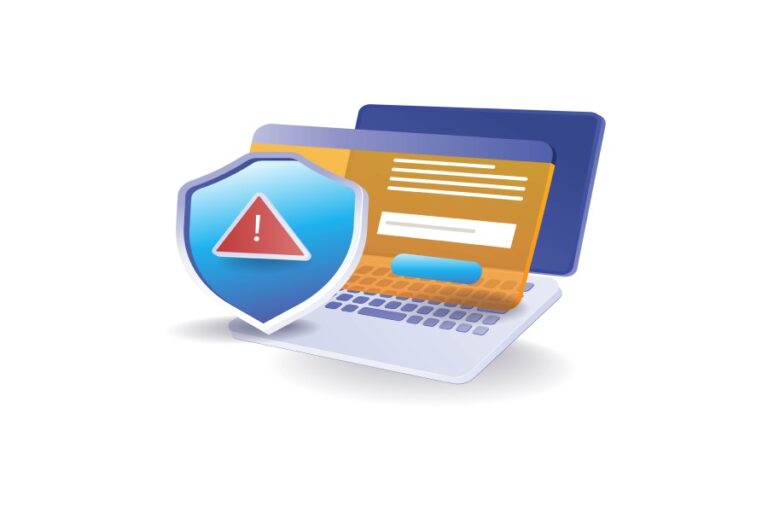DMARC XML Analyzer: Analyze Your Email Security Reports Effectively
In a world where email communication reigns supreme, securing your email domain is no longer optional—it’s essential. Every day, businesses face the threat of unauthorized use of their domains, risking reputations and relationships. That’s where DMARC comes into play. By implementing DMARC, you create a safety net against phishing attacks and other malicious activities that could tarnish your credibility. But understanding the nitty-gritty details of DMARC reports can feel like trying to read a foreign language.
Thankfully, a DMARC XML Analyzer steps in to turn perplexing data into clear insights. This tool not only simplifies the intricacies of email security metrics but also empowers organizations to monitor their performance effectively, making it easier to maintain customer trust. Let’s dive deeper into the critical role of the DMARC XML Analyzer and how it can bolster your email security strategy.
A DMARC XML Analyzer is a tool designed to parse and aggregate DMARC Aggregate XML reports, transforming complex data into human-readable formats, thereby helping users understand critical email security metrics such as authentication rates and message actions. By utilizing this tool, organizations can effectively monitor their email domain’s performance and ensure compliance with DMARC policies, leading to enhanced protection against unauthorized domain use.
What is a DMARC XML Analyzer?
A DMARC XML Analyzer serves as a helpful bridge between complex data and user-friendly information. At its core, it is designed to parse and visualize DMARC Aggregate XML reports generated by email service providers like Gmail and Yahoo! when they receive emails from your domain.

These reports can be intricate, packed with technical details that may bewilder even seasoned professionals. However, the analyzer transforms this complex data into clear, digestible formats, allowing users to quickly grasp their email authentication status.
The essence of DMARC lies not only in preventing unauthorized use of your domain but also in providing reporting options regarding DKIM (DomainKeys Identified Mail) and SPF (Sender Policy Framework) alignment. This means that a DMARC report can inform you about who has attempted to send emails on your behalf and whether those messages were successful or faced challenges in authentication checks.
Each aspect highlighted by the DMARC XML Analyzer plays a critical role in helping identify potential issues with email deliverability and security.
One of the most valuable features of these parsers is their capability to extract essential metrics from the raw XML files—metrics that include the number of emails sent, the percentage of messages that passed or failed authentication checks, and the sources of email traffic.
For instance, imagine sending out 10,000 emails within a week; a DMARC XML Analyzer can summarize how many of those messages successfully passed SPF and DKIM checks, making it evident whether your email policies are effective.
Furthermore, many analyzers go beyond just parsing data; they often include visual representations such as graphs and charts that simplify understanding at a glance. This visual context is crucial for both technical and non-technical users alike since it provides immediate insights into performance trends and anomalies within your email flow.
With these tools, you’ll not only gain clarity on your email metrics but also establish better practices for managing domain security effectively. Next, let’s explore the standout characteristics that make these analyzers essential for maintaining your email integrity.
Key Features Overview
Data Aggregation
One of the standout features of a DMARC XML Analyzer is its capability to aggregate data from multiple DMARC reports. When organizations send high volumes of emails, collecting and organizing this information can quickly become overwhelming. This aggregation simplifies the process, merging data into a single, comprehensive view that provides clarity.

Imagine it as condensing the chaos of a bustling marketplace into neat, organized shelves; everything becomes easier to navigate when presented in a structured manner. This feature is particularly beneficial for larger organizations that manage numerous domains while striving to uphold high standards for email authenticity.
While aggregating raw data is essential, transforming that data into something comprehensible is key.
User-Friendly Dashboards
A user-friendly dashboard serves as the operational heart of a DMARC Analyzer. Rather than sifting through complex spreadsheets filled with jargon and numbers, users can rely on clear visualizations like charts and graphs that illustrate significant metrics.
For example, you might find a bar graph showcasing monthly pass/fail rates for SPF (Sender Policy Framework) and DKIM (DomainKeys Identified Mail) checks. These visual aids allow even the least technical team members to spot trends or issues at a glance. With such an interface, interpreting intricate data becomes as simple as glancing at a landscape painting instead of trying to decipher an elaborate novel.
With visual clarity set, let’s dive deeper into what detailed reporting does for your understanding.
Detailed Reporting
Beyond just visuals, detailed reporting maximizes the effectiveness of your email authentication efforts. The ability to break down authentication results helps administrators identify specific issues—like pinpointing which IP addresses are responsible for unauthorized email attempts. This feature empowers users not only to understand where their vulnerabilities lie but also gives them the opportunity to take actionable steps towards remediation.

Imagine running a bike shop: if you keep hearing complaints about flat tires and your reports indicate a specific vendor’s tires are frequently failing, you’re now equipped to address the issue—this is exactly what detailed reporting enables within your email security framework.
Having categorized these strengths gives you a better perspective as we move into understanding the practical steps needed for effective report analysis.
How to Analyze DMARC Reports
The first step in this journey toward understanding your DMARC reports is to collect the data. Gather all DMARC XML reports sent to your domain, typically stored in a designated email box separate from your regular emails—think of it as your DMARC data vault. You might also access these reports via your email service provider’s portal. Take a moment to ensure you have them all; after all, every piece of information counts when it comes to analyzing your email security.
Once you’ve assembled your reports, the next step is to upload them to a DMARC XML Analyzer tool. Many of these tools feature a user-friendly interface with drag-and-drop functionality, making the process incredibly easy. Imagine selecting multiple files from your computer and dropping them onto a platform that will do the heavy lifting for you—that’s the beauty of modern technology! As you do this, you’ll likely feel a wave of relief; this previously overwhelming task will yield lightweight, human-readable formats that can clarify how your domain is performing.
After uploading, take time to review the authentication results presented by the analysis tool. Specifically, focus on the pass and fail rates for SPF (Sender Policy Framework) and DKIM (DomainKeys Identified Mail) checks. This helps highlight how successfully authenticated your messages are, revealing potential vulnerabilities against phishing and spoofing attacks. If you observe higher fail rates for either SPF or DKIM checks, it’s crucial to investigate further because these failures indicate that legitimate emails may be flagged or unauthorized entities could be attempting to send emails on behalf of your domain.

This leads us deeper into understanding important metrics in general email security management, which directly informs you about how well-prepared your organization is against threats.
Once you’ve evaluated those immediate data points, consider moving toward longer-term benefits that this analysis can provide. Monitoring trends over time can unveil patterns that may not be apparent from a single report alone. If you notice consistent failures from certain IP addresses or a gradual decline in authentication rates, taking action promptly becomes even more critical. It may prompt you to refine your SPF records or tighten up DKIM configurations to reduce risks.
Just think of it as keeping an eye on an unruly pet; it’s much easier to address issues before they become full-blown disasters!
Lastly, while interpreting these reports might initially seem technical, every piece of data contributes towards fortifying your email security posture. Embrace these findings! Think of the knowledge gained not just as numbers or percentages but as critical insights that connect directly to protecting your brand reputation and maintaining trust with clients and partners alike.
By mastering the art of analyzing DMARC reports and leveraging these insights effectively, you’re setting the stage for understanding how such practices can bolster your email security measures.
Benefits of Implementing the Tool
The primary benefit of using a DMARC XML Analyzer is enhanced email security. Beyond just managing your reputation, implementing DMARC ensures that your domain is protected against unauthorized use. This means that when you send emails, recipients are reassured they are coming from a legitimate source. Without this tool, your domain might be inadvertently used for phishing attempts or other malicious activities, tarnishing your reputation and potentially leading clients to disregard your communications altogether.

According to a survey by Cisco, implementing DMARC can lower phishing attacks by up to 77%. This statistic alone speaks volumes about the effectiveness of having a robust email security strategy in place. Whether it’s preventing financial loss or maintaining customer trust, the numbers highlight the necessity of adopting such technologies.
Some might argue that a manual review is sufficient to manage emails and assess their authenticity. However, given the high volume of email traffic that businesses encounter today, relying on manual checks is not only time-consuming but also prone to human error. Automated analysis streamlines this process, allowing organizations to quickly and efficiently pinpoint issues that could compromise their email systems. For instance, while one could theoretically review each email’s SPF and DKIM settings manually, an analyzer can ensure that this task is handled in real-time—an essential factor when every second counts in the realm of security.
Furthermore, receiving regular insights and summaries from tools like DMARC XML Analyzers enables organizations to take proactive measures against potential threats before they escalate. By understanding usage patterns sourced from reports generated by mail receivers like Gmail and Yahoo!, companies can adapt their strategies promptly. These insights eliminate guesswork; you could receive crucial updates on authentication rates and message actions within moments instead of days spent sifting through data.
The beauty of implementing a DMARC XML Analyzer lies in its ability to enhance security while providing clarity and efficiency in email management—two indispensable aspects for any organization striving for excellence in today’s digital landscape. As we consider these transformative tools, let’s explore the next steps needed for effective implementation.

Setup and Configuration
Navigating the world of DMARC can seem daunting, but establishing a DMARC XML Analyzer isn’t as complex as it might appear. Let’s break it down into manageable steps that ensure you get the most out of this valuable tool.
Step I: Create a DMARC Record
The first step towards effective implementation is ensuring that you have a DMARC record published in your DNS settings. Think of this record as your frontline defense against phishing and spoofing attacks. This action not only significantly increases your email security but also sets the stage for receiving vital aggregate reports from email service providers.
To publish a DMARC record, you need to add a TXT record in your DNS with your specific DMARC policy. This policy dictates how your domain handles incoming emails that fail authentication checks. Here’s where it gets especially interesting because you have options – specifying enforcement levels such as p=none, p=quarantine, or p=reject. Each option opens up a different level of security and operational control over your email authentication practices.
In addition to creating the record, don’t forget to configure reporting by specifying where these DMARC reports should be sent, like to a dedicated email address for easy tracking.
| Action | Steps |
| Publish DMARC Record | Add a TXT record in DNS with the DMARC policy |
| Configure Reporting | Specify where to send DMARC reports (e.g., an email address) |
Once you’ve successfully deployed your DMARC record in the DNS, it’s time to integrate it with your analyzer.
Step II: Integrate with Analyzer
Connecting your DMARC XML Analyzer is like unlocking the doorway to clearer insights about your domain’s email performance. By fetching reports directly from the specified email address, you’re enabling real-time monitoring and analysis, which are critical for maintaining strong email security.
After integration, you’ll have continuous access to the analytics from these reports, making regular monitoring an essential part of your strategy. Keeping an eye on these results will help you understand delivery issues or unauthorized attempts to use your domain — keeping potential threats at bay and enhancing your overall protection strategy.

Establishing this connection initially may require some technical knowledge, but remember it’s all about following the prompts provided by your analyzer tool. As you become more familiar with it, managing these insights transforms into a routine that can significantly enhance not just security but also the deliverability of legitimate emails associated with your domain.
Now that you’ve laid the groundwork for robust email security through effective setup and integration, it’s essential to tackle any challenges that may arise during implementation or monitoring processes.
Addressing Common Challenges
Implementing and using a DMARC XML Analyzer isn’t without its hurdles, but understanding these challenges allows you to navigate them more smoothly. One major issue lies in the realm of complex XML data. Raw XML files can be quite overwhelming due to their technical nature and dense formatting. You might find yourself squinting at lines of text that appear cryptic, making it easy to miss essential details about your email security status.
Fortunately, DMARC XML Analyzers are designed to take this convoluted data and convert it into something much more digestible. Tools like MXToolbox not only present the data in clearer formats but also offer the ability to aggregate it by IP address, significantly simplifying the review process.
However, even with user-friendly interfaces at your fingertips, another challenge arises from the sheer volume of data generated by email security measures.
High volumes of incoming emails can lead to an incredible amount of data needing attention, presenting new complications for users trying to maintain efficient operations. If you’re inundated with reports and detailed records from various sources, managing this information becomes critical. This is where filtering features come into play. Most robust DMARC XML Analyzer tools allow you to filter and prioritize data based on specific parameters such as date ranges or refined authentication results.
This enables you to focus on crucial alerts without being overwhelmed by minutiae. Utilizing these features effectively can help streamline your analysis and make your overall workflow more manageable.

While both complex XML data and volume management can pose obstacles, there’s also the aspect of ongoing monitoring and adjustments that one must consider.
Regularly reviewing your DMARC reports is vital for maintaining your email security posture. Inconsistent monitoring can lead to unauthorized senders slipping through the cracks unnoticed. To combat this issue, consider setting a routine for checking these reports—perhaps once a week—so you can catch anomalies before they escalate into more serious threats. By establishing this cadence of reviews, you’ll ensure compliance with best practices and gain insights that could enhance your email security strategy.
By addressing these challenges directly through thoughtful implementation and consistent monitoring practices, you’ll maximize the effectiveness of your DMARC XML Analyzer while bolstering your defense against potential email threats.
In navigating these common challenges, you not only enhance your utilization of DMARC XML Analyzers but also fortify your entire email security framework against emerging threats.







